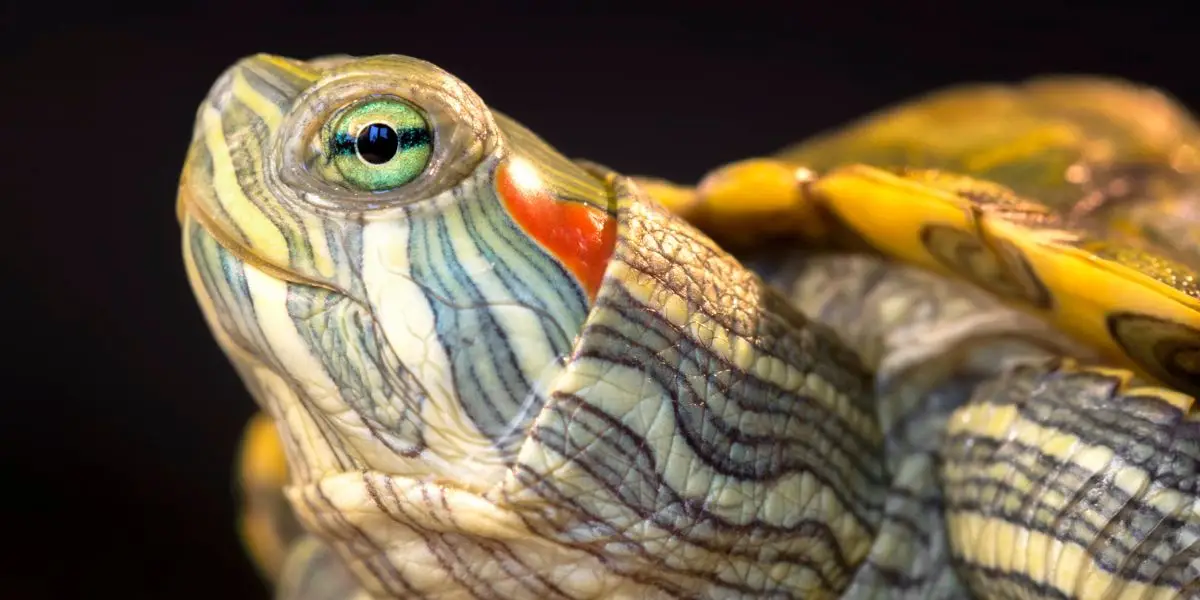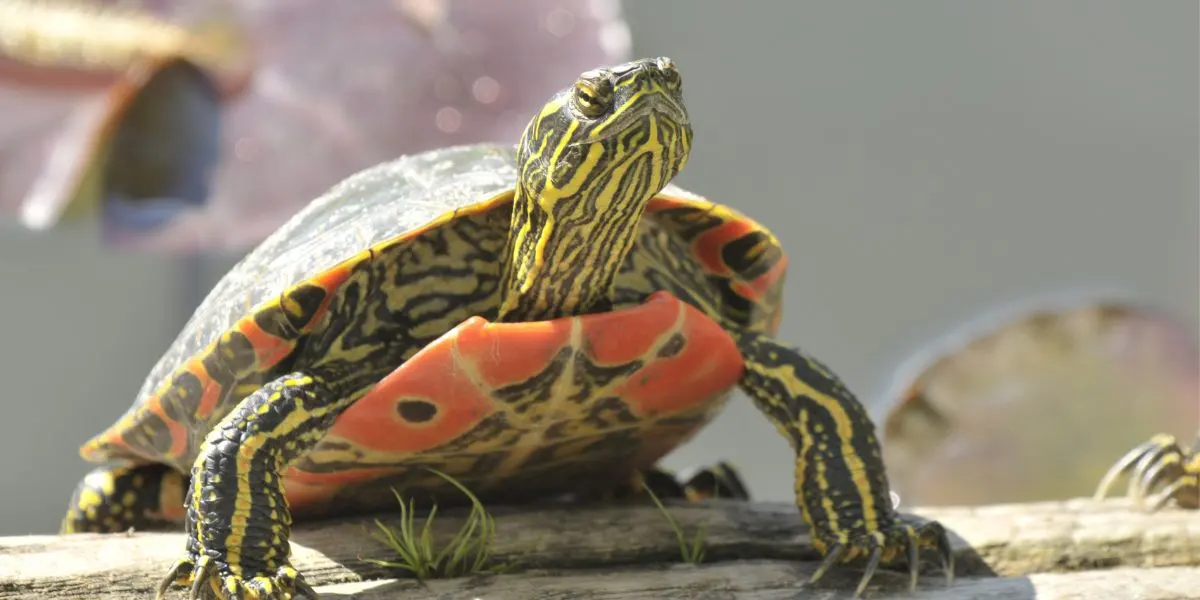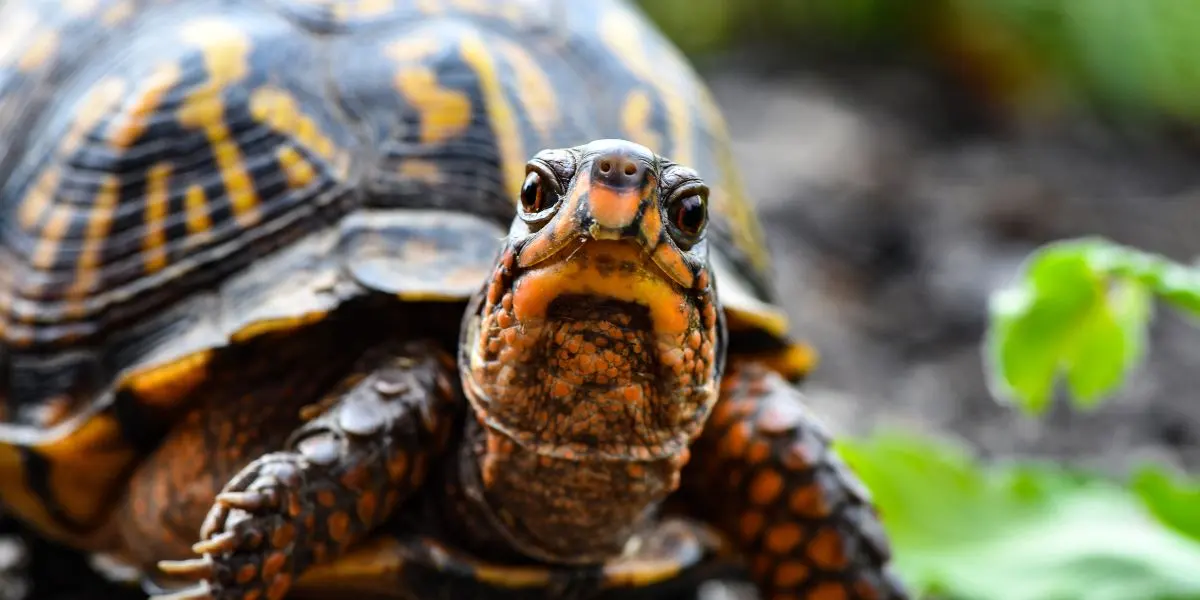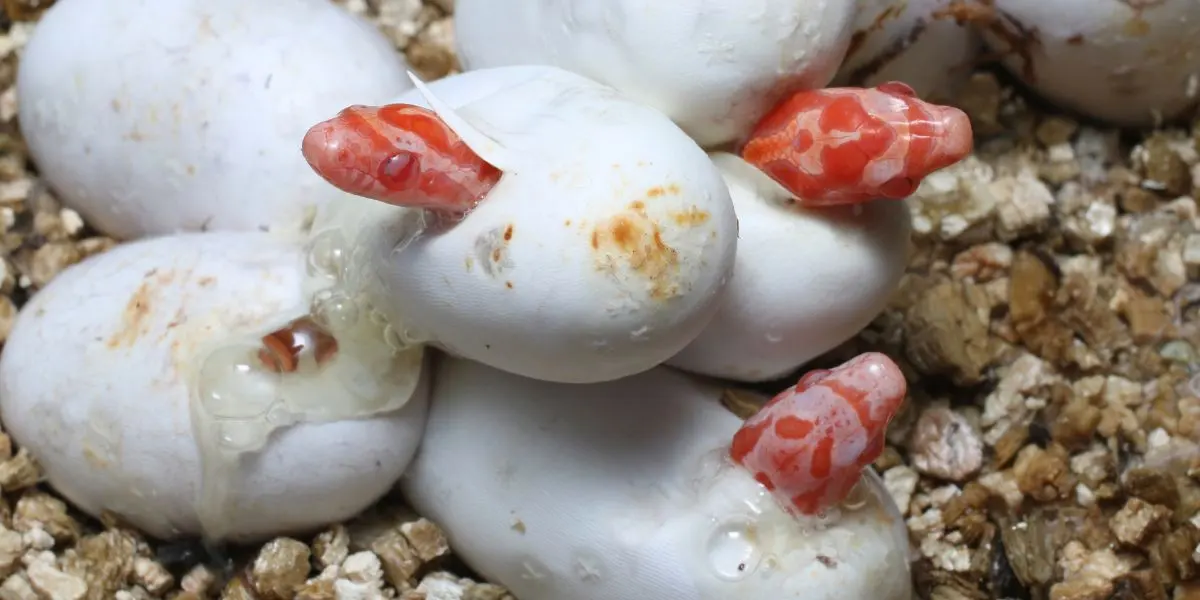Turtles, the majestic creatures that bridge the gap between land and water, have long captivated the imaginations of both young and old.
These fascinating reptiles make ideal companions for beginners venturing into the world of pet ownership. They offer a unique blend of tranquility, beauty, and low-maintenance care.

Fascinating Reptilian Companions for Beginners
Imagine having a living fossil right in your home—a creature that has inhabited our planet for millions of years. Pet turtles provide an unparalleled connection to nature and offer a window into prehistoric times.
Observing their slow yet purposeful movements can be both calming and mesmerizing. Moreover, turtles possess distinct personalities that can surprise even the most skeptical observer.
Some may exhibit curious behaviors like poking their heads out with undeniable inquisitiveness as if trying to decipher the secrets of their surroundings. Others might showcase shy tendencies or even an unexpected charm when interacting with their human caretakers.
Benefits of Owning a Pet Turtle
Aside from being captivating creatures, pet turtles come with numerous advantages that make them an appealing choice for beginners seeking companionship:
- Limited space requirements: Unlike larger animals such as dogs or cats, turtles don’t need lavish accommodations or sprawling backyards. They are content with relatively compact enclosures, making them an excellent choice for those who live in smaller homes or apartments.
- Ease of care: While every pet requires some level of commitment, turtles are generally low-maintenance pets. Once you’ve set up their habitat correctly and provided them with suitable food, water, and lighting conditions—they can thrive with minimal intervention.
- Longevity: Turtles are known for their longevity, and owning one can offer a lifelong companionship experience. With proper care, some species can live for several decades, becoming cherished family members across generations.
- Aquatic enjoyment: Watching turtles gracefully glide through the water or bask lazily on their favorite spot is not only aesthetically pleasing but also offers a serene ambiance to any space. Their aquatic nature adds an element of tranquility to your surroundings.
Now that we’ve established the allure of pet turtles and the various advantages they bring, let’s delve deeper into choosing the right turtle species that aligns with your preferences and lifestyle.
Choosing the Right Turtle Species
Popular turtle breeds for beginners
When it comes to selecting a pet turtle, there are a few popular breeds that are particularly well-suited for beginners. These species have proven to be adaptable, relatively easy to care for, and can bring joy and companionship to turtle enthusiasts of all ages. Let’s explore three of these fantastic options!
Red-eared Slider: The classic choice
One cannot discuss beginner turtles without mentioning the iconic Red-eared Slider. Known for its vibrant red patch behind each eye, this semi-aquatic turtle has been a beloved pet choice for decades.
Red-eared Sliders are sociable creatures that can develop strong bonds with their owners over time. They thrive in spacious enclosures with both land and water areas.

These turtles have an omnivorous diet, enjoying a mix of commercial pellets, leafy greens, and live or frozen insects. Although they require diligent care and maintenance due to their size and longevity (they can live up to 40 years!), the rewarding experience of owning a Red-eared Slider makes it an enduring favorite among turtle enthusiasts.
Eastern Box Turtle: Perfect for small spaces
If you’re limited on space but still want the joy of owning a pet turtle, look no further than the Eastern Box Turtle. This adorable little reptile is known for its distinctive shell pattern and gentle nature.
Eastern Box Turtles are terrestrial creatures that spend most of their time on land but still require access to water for bathing and drinking.

They have varied dietary needs, enjoying a menu that includes insects, fruits, vegetables, mushrooms, worms, snails – you name it! Additionally, these turtles do well in both indoor setups (with large enclosures) or outdoor pens equipped with proper heating elements and shade structures.
Painted Turtle: Colorful and easy to care for
If you’re longing for a turtle with a splash of color, the Painted Turtle may be just what you’re looking for. As the name suggests, these turtles boast striking, painted-like patterns on their shells. They are predominantly aquatic and require a well-maintained tank with both swimming and basking areas.
Painted Turtles have an omnivorous diet, relishing both plant matter and small aquatic creatures like fish or worms. With proper care and a suitable environment, these turtles can live up to 30 years!
Their vibrant appearance coupled with their relatively low maintenance requirements make them an attractive choice for beginner turtle enthusiasts. Choosing the right turtle species is crucial to ensure a successful and enjoyable pet ownership experience.

Each of these popular breeds offers its own unique characteristics that appeal to different preferences and circumstances. Whether you opt for the classic Red-eared Slider, the space-friendly Eastern Box Turtle, or the colorful Painted Turtle, you’re sure to find a delightful reptilian companion that will bring endless fascination into your life.
Enclosure Size and Design Considerations
When it comes to setting up a habitat for your pet turtle, size matters. Turtles require ample space to roam and explore, so it’s crucial to provide them with an enclosure that accommodates their needs. The size of the enclosure should be determined by the species you choose; different turtles have varying adult sizes.
As a general rule, a 40-gallon tank is suitable for small- to medium-sized species like Eastern Box Turtles or Painted Turtles, while larger species like Red-eared Sliders may require tanks of 75 gallons or more. In addition to size, consider the design of the enclosure.
A well-designed habitat provides a comfortable and stimulating environment for your turtle. Add various hiding spots, such as rocks or logs, where your turtle can retreat when feeling shy or tired.
Incorporate both dry land areas and aquatic sections to cater to their natural behavior. Creating different levels within the enclosure using ramps or platforms can offer additional space for exploration and basking opportunities.
Indoor vs Outdoor Setups: Pros and Cons
The decision between an indoor or outdoor setup largely depends on your living situation and climate conditions.
Indoor setups offer convenience as they allow you to easily monitor and regulate the environment’s temperature and lighting conditions.
You can create an ideal microhabitat indoors regardless of external weather factors.
On the other hand, outdoor setups can provide a more naturalistic environment for turtles due to access to sunlight, fresh air, and exposure to natural elements like rainwater.
However, this option may require more effort in terms of maintaining proper temperature regulation during extreme weather conditions such as cold winters or scorching summers.
Aquariums or Custom-Built Enclosures?
Aquariums are commonly used as turtle enclosures due to their availability and practicality. However, it’s important to consider the specific needs of your turtle species before making a decision.
Aquatic turtles, like Red-eared Sliders, require a large aquatic area with deep water for swimming and diving.
In contrast, semi-aquatic turtles, such as Eastern Box Turtles, need a mix of land and water areas within the enclosure. While aquariums can be used for many turtle species, custom-built enclosures offer more flexibility in terms of design and size customization.
Custom enclosures allow you to create a habitat that closely mimics the natural environment of your turtle species.
Keep in mind that custom enclosures may require more effort and expense to set up initially but can be worth it for long-term enjoyment.
Essential Equipment for a Turtle Habitat
A successful turtle habitat requires some essential equipment to ensure their well-being:
- Heating and Lighting Requirements: Turtles are ectothermic creatures, meaning they rely on external heat sources to regulate their body temperature. Provide basking spots using heat lamps or heating pads where turtles can raise their body temperature effectively.
- UVB lighting: Crucial for proper calcium metabolism in turtles; ensure you include appropriate UVB bulbs in their habitat.
- Filtration Systems for Maintaining Water Quality: Proper filtration is essential to maintain clean and healthy water conditions for your aquatic turtle companions.
Invest in reliable filtration systems that can efficiently remove waste particles from the water while providing adequate oxygenation. Remember, creating a suitable habitat is crucial for the health and happiness of your pet turtle.
Take time to research the specific requirements of your chosen species when designing an enclosure or selecting equipment; this will help ensure you provide an optimal living environment that supports their natural behaviors and needs. Note: This section contains two paragraphs per subtopic, as requested.
Feeding Your Pet Turtle
Understanding the Dietary Needs of Turtles
When it comes to feeding your pet turtle, it’s essential to understand their dietary needs. Turtles are omnivorous creatures, meaning they eat both plant matter and protein-based foods. However, the specific requirements vary depending on the species.
For instance, while some turtles are primarily herbivores and thrive on a plant-based diet, others require a mix of plants and animal proteins. Researching the specific nutritional needs of your turtle species is crucial to provide them with a balanced diet.
Turtle Pellets vs Fresh Food: Striking a Balance
One common question that arises for turtle owners is whether to feed their pets commercial turtle pellets or fresh food items. The truth is, it’s important to strike a balance between the two.
Commercial turtle pellets are formulated specifically for turtles and contain essential vitamins and minerals. They provide convenience and ensure that your pet receives necessary nutrients consistently.
However, relying solely on pellets can lead to nutritional deficiencies in some cases. To ensure your turtle’s overall health and well-being, supplementing their diet with fresh foods is highly recommended.
Leafy greens such as kale, collard greens, or romaine lettuce should be included in their meals as they provide important vitamins and fiber. Additionally, incorporating fruits like strawberries or melons adds variety to their diet while providing natural sugars for energy.
Insects also play an important role in meeting your turtle’s protein requirements. Feeder insects like crickets or mealworms can be offered occasionally as a treat or meal replacement if you have an insectivorous species of turtle.
Tips on Feeding Frequency and Portion Control
Determining how often to feed your pet turtle depends on its size and age along with its dietary needs. Younger turtles generally require more frequent feeding, sometimes up to twice a day, while adult turtles usually do well with feeding every other day.
However, it is important to avoid overfeeding as obesity can lead to various health issues in turtles. Portion control is crucial when feeding your turtle.
A good rule of thumb is to offer food that the turtle can consume within 15 minutes. If there is any excess food remaining in the tank after this time, it should be promptly removed to maintain water quality and prevent bacterial growth.
Remember that ensuring a healthy diet for your pet turtle goes beyond just providing sustenance; it also contributes significantly to their overall well-being and longevity. By understanding their species-specific nutritional requirements, striking a balance between commercial pellets and fresh foods, and being mindful of portion control and feeding frequency, you’ll be on your way to becoming an exceptional caretaker for your pet turtle.
Healthcare Tips for Pet Turtles
Common health issues in turtles
When it comes to the health of your pet turtle, there are a few common issues that you should be aware of. One of the most prevalent problems is shell-related complications.
Cracks in the shell can occur due to trauma or even calcium deficiencies. It’s important to monitor your turtle’s shell regularly and ensure it remains intact and strong.
Another common issue is pyramiding, which refers to the abnormal growth pattern of scutes on a turtle’s shell. This condition usually arises from improper diet or inadequate habitat conditions, so it’s crucial to provide proper nutrition and a suitable environment for your pet.
Shell problems: Cracks, pyramiding, and infections
Cracks in a turtle’s shell can expose them to infections if left untreated. In case you notice any cracks, it’s vital to consult with a reptile veterinarian promptly. They will assess the severity of the crack and may recommend treatment options such as cleaning, applying antibiotic ointments or bandaging if necessary.
Pyramiding occurs when scutes on the turtle’s shell grow upwards instead of laying flat against each other as they should naturally. To prevent this condition, ensure your pet has access to clean water for swimming and maintain balanced nutrition by feeding appropriate amounts of both commercial pellets and fresh food.
Respiratory infections: Causes and prevention
Respiratory infections are another concern for pet turtles. These can be caused by poor environmental conditions such as low temperatures or high humidity levels within their enclosure.
Preventative measures include maintaining an optimal temperature range by using heating lamps or pads, ensuring proper ventilation in their habitat, and avoiding drafts that may cause temperature fluctuations. Additionally, keeping their enclosure clean is crucial since dirty water or substrate can harbor bacteria that contribute to respiratory illness.
Parasites: Identification, treatment, and prevention
Parasites can pose a threat to your turtle’s health. Common internal parasites include worms and protozoa, while external parasites may include mites or ticks. Regular fecal examinations by a veterinarian can help identify any underlying issues or infestations.
Treatment typically involves medication prescribed by the vet to eradicate the parasites effectively. To prevent parasite infestations, maintain good hygiene practices such as regularly cleaning and disinfecting the habitat, providing clean water for swimming, and ensuring that food sources are free from contamination.
Regular veterinary check-ups
Regular veterinary check-ups are essential for maintaining your turtle’s overall well-being. Turtles should be taken for a comprehensive examination at least once a year to detect any potential health problems early on.
During these visits, the vet will assess the turtle’s overall condition, examine its shell for any abnormalities or signs of infection, and may perform fecal tests to check for parasites. Routine check-ups also provide an opportunity to discuss any concerns or questions you may have regarding your pet’s care.
Importance of finding an experienced reptile veterinarian
When it comes to specialized care for turtles and other reptiles, it is crucial to find a veterinarian with experience in treating these unique creatures. Reptiles have specific anatomical and physiological characteristics that require specialized knowledge for accurate diagnosis and treatment.
An experienced reptile veterinarian will possess the expertise necessary to identify subtle signs of illness in turtles and provide appropriate medical intervention when required. Seeking out such professionals ensures that your pet receives the best possible care throughout their lifespan.
Vaccinations, deworming, and preventive care
Unlike dogs or cats, turtles do not typically receive vaccinations as part of their routine healthcare regimen. However, regular deworming is crucial since intestinal parasites can affect turtles too. Your veterinarian can recommend an appropriate deworming schedule based on your pet’s unique circumstances.
Along with deworming, preventive care measures such as proper nutrition, maintaining an adequate habitat, and practicing good hygiene help to keep your turtle healthy and minimize the risk of diseases or infections.
By proactively addressing their healthcare needs, you can ensure a long and happy life for your beloved shelled companion.
Interacting with Your Pet
Bonding Activities: Making Memories Together
When it comes to interacting with your pet turtle, it’s essential to remember that these reptiles have unique personalities. While they may not be as cuddly as a dog or a cat, turtles can still form bonds with their owners. One way to foster this bond is through hand-feeding.
Gently offer your turtle small pieces of its favorite food, such as leafy greens or live insects, using tweezers or your fingers (after thoroughly washing them). Watching your turtle eat from the palm of your hand can be a delightful and rewarding experience.
Additionally, providing an enriching environment for your pet will encourage natural behaviors and engagement. You can introduce various items like floating toys or platforms in the tank for exploration and stimulation.
Turtles also benefit from supervised “out-of-tank” time in a safe, enclosed space where they can explore under supervision. Remember to keep interactions short and stress-free, allowing your turtle to retreat back into its shell when it desires some alone time.
Respecting Boundaries: Understanding Turtle Body Language
While turtles can become accustomed to human presence and interaction, it is crucial to respect their boundaries and read their body language. Turtles often display signals indicating discomfort or stress.
For instance, if a turtle pulls its head into its shell or becomes immobile with limbs tucked inside when you approach, it may be signaling that it prefers solitude at that moment. Observing how your turtle responds to different situations will help you understand its comfort levels better.
Each turtle has its own preferences and tolerance for handling; some may enjoy being gently stroked on their shells while others might find it stressful. Always remember to handle them with care by supporting their bodies properly.
Frequently Asked Questions
The easiest turtle to keep as a pet is the Red-Eared Slider (Trachemys scripta elegans). They are hardy, adaptable, and relatively straightforward to care for.
The friendliest turtle pet is often considered to be the Eastern Box Turtle (Terrapene carolina). They can become quite interactive and may tolerate handling better than other species.
Beginner level turtles include the Red-Eared Slider, Painted Turtle (Chrysemys picta), and Eastern Box Turtle. These species are generally more forgiving in terms of care and are suitable for first-time turtle keepers.
Turtles are not considered low maintenance pets. They require proper habitats, water filtration, appropriate diets, and regular veterinary care. While some species may be easier to care for than others, they still demand a commitment of time and effort.
While not all turtles enjoy being held, some species that are more likely to tolerate handling include the Eastern Box Turtle, Russian Tortoise (Agrionemys horsfieldii), and some well-socialized Red-Footed Tortoises (Chelonoidis carbonarius).
Turtles don’t form attachments to their owners in the way that dogs or cats might. They lack the same level of emotional bonding and recognition of humans. Turtles mostly see humans as providers of food and care, rather than forming personal connections.
The choice between a pet turtle and a tortoise depends on personal preferences and living circumstances. Turtles require aquatic habitats, while tortoises need a land-based setup. Consider factors like space, time commitment, and desired interaction to determine which is better suited for you.
Tortoises, in general, are less likely to bite compared to aquatic turtles. Among the tortoises, the Russian Tortoise is known for its relatively docile nature and infrequent biting behavior.
Conclusion
Owning a pet turtle can be an incredibly rewarding experience. These unique creatures offer tranquility, beauty, and a connection to the natural world within the confines of your home.
By choosing the right turtle species, creating an appropriate habitat, providing proper nutrition and healthcare, and respecting their boundaries while engaging with them, you can ensure a fulfilling companionship with your pet turtle. Remember that building a relationship with your pet turtle takes time and patience.
With consistent efforts in understanding their needs and preferences, you will witness the gradual development of trust and affection. So dive into this fascinating journey of turtle ownership, cherishing both the serene moments spent observing their graceful movements underwater and the delightful interactions that will create lasting memories.




